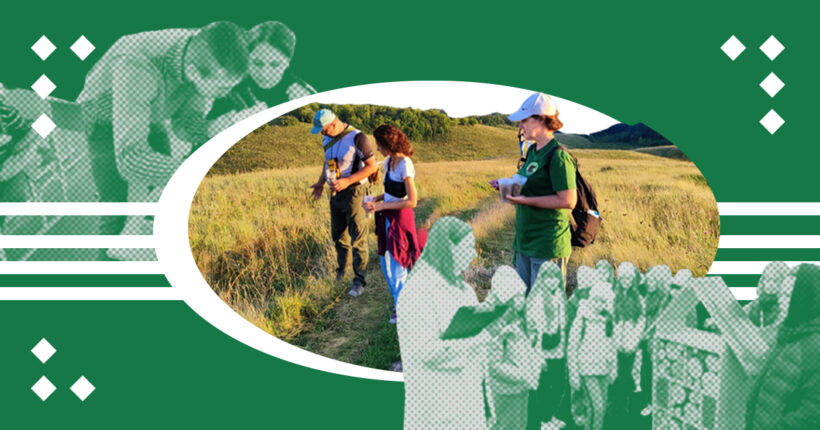
What is the problem?
Before the war, Ukraine accounted for 35% of Europe's biodiversity. Along with people, the war does not spare Ukrainian nature either — missile strikes, fires, and military equipment pollute the air, water, and land, and animals and plants all suffer from hostilities.
What is the solution?
According to ecologists, the restoration of nature depends on how Ukrainians will treat it when they begin rebuilding the country after the war. However, they need to start thinking about it now.
In the Kharkiv region's Krasnokutsk community, on the territory of the local lyceum, the organization Green Art Tour has created a biodiversity space, becoming part of a movement to popularize environmental education, nature-oriented solutions, volunteering, and citizen science. For children, it is a platform for communication with nature and a source of new knowledge.
How does it work?
A sustainable society begins with an attitude toward the environment

Artur Koichurenko is the administrator of the project "Next to Nature: Biodiversity Space in Krasnokutsk."
Green Art Tour is a non-governmental organization led by a team of people who care about their region and work to shape their own environment.
The community aims to popularize, revitalize, and preserve Ukraine's historical and cultural heritage, disseminate ideas to implement ecological and thrifty tourism practices while supporting artistic and environmental initiatives. Most importantly, all this involves projects aimed at engaging young people.
Artur Koichurenko is the administrator of the project "Next to Nature: Biodiversity Space in Krasnokutsk" and the founder of the Green Art Tour. He says that when the war started, the NGO took on humanitarian work. For almost all of 2022, it was engaged in helping soldiers, displaced persons, and Ukrainians who stayed in affected areas. However, later, activists began to return to their primary activities focused on environmental protection.
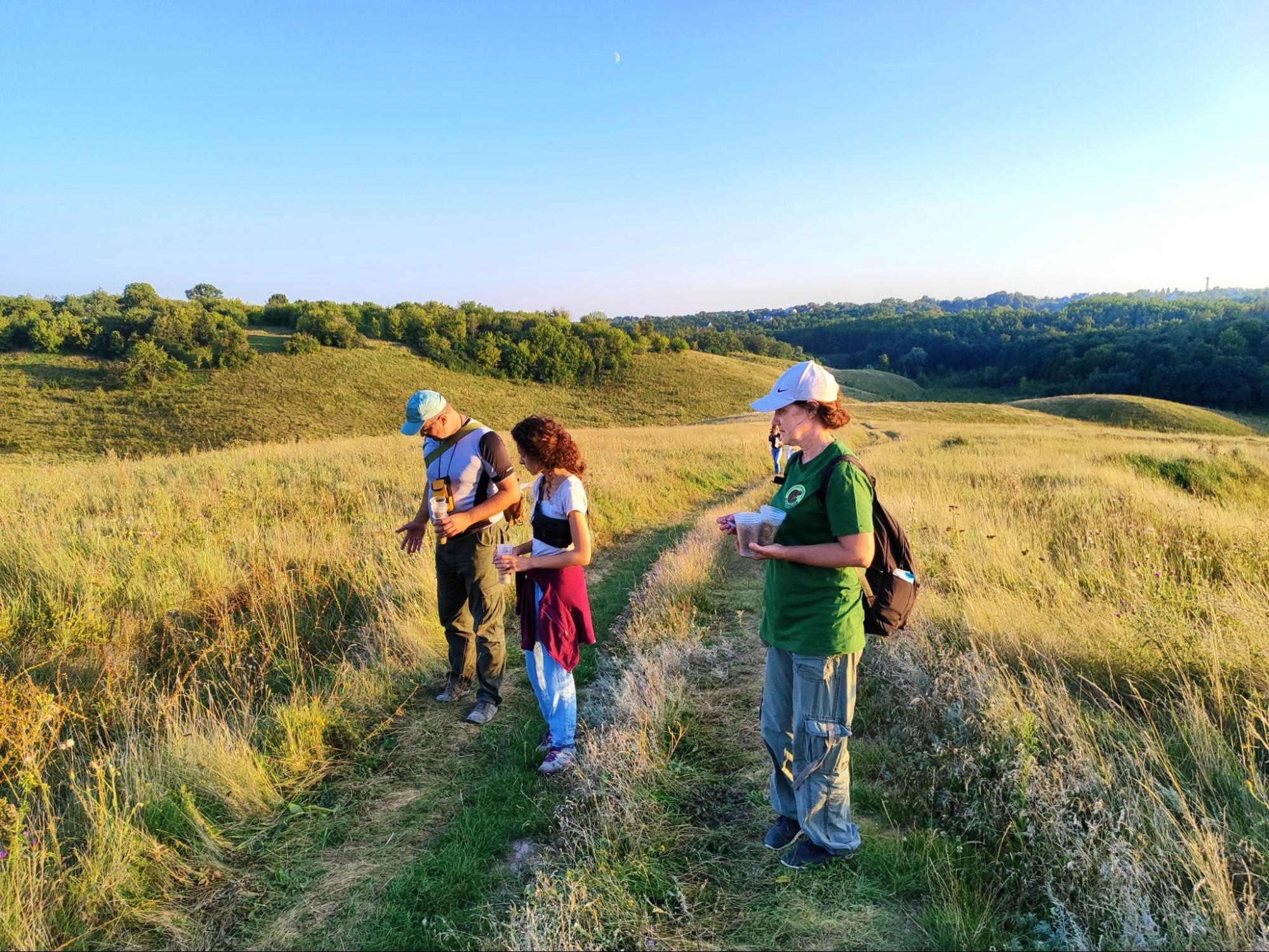
Field collection of background plant seeds in Krasnokutsk.
Koichurenko speaks about the nature of his community with pride and love: "The nature here is wonderful and rich, and an incredible variety of life forms surrounds us! Therefore, despite today's tough conditions, we want our community to develop and become a leader in Ukraine."
Koichurenko notes that nature conservation volunteerism is highly developed in the community and has a reputation of Krasnokutsk as one of Ukraine's greenest regions.
The community has close partners among nature protection organizations, as well as the support of the village council. There is a local initiative group that is ready to work with promising young people who willingly join in important community processes. Koichurenko believes ecological projects and initiatives are an excellent basis for forming a powerful volunteer movement in the community. This can strengthen research work, enhance cooperation of the community, develop educational institutions, and community centers, as well as nature protection institutions.
Close to nature
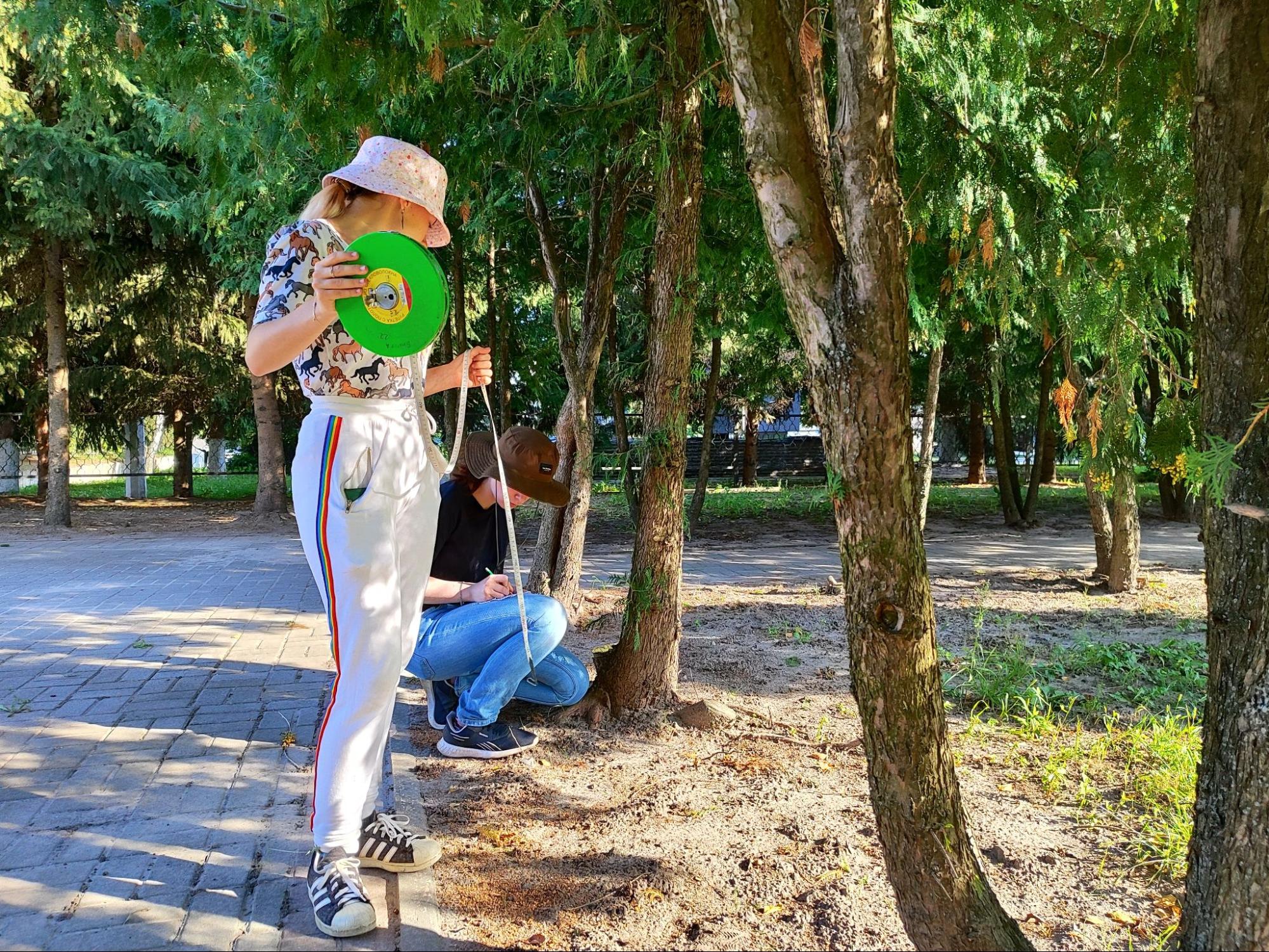
Planning of plots for a lawn with various herbs by students of the Krasnokutsk lyceum.
Creating a biodiversity space in Krasnokutsk is a longtime dream of Koichurenko. Specially created natural areas where local flora and fauna have enough space to live and develop are trendy in Europe. In megacities and small settlements, lawns made of different grasses can be found more often, as well as wild corners which architects and urban planners create during the construction of new districts, making urban spaces more harmonious and nature-oriented.
At the end of 2022, the Krasnokutsk community took part in a project titled "Let's preserve ecosystems for the sake of a sustainable future climate," by the Ukrainian Nature Conservation Group — and became one of the three winning communities.

Botanist Anhelina Rusanova is preparing a team of volunteers to plant a lawn.
"After this project, we continued our cooperation and sought opportunities to implement our work. We were inspired by examples of global solutions that we could analyze and see how much this changes the face of the city and contributes to the greening of people's everyday life," Koichurenko told Rubryka.

Children sow the space of biodiversity.
In the summer of 2023, botanists, employees of the institution, children, and locals got involved in creating a space for biodiversity in Krasnokutsk Lyceum No. 1. About 50 volunteers collected seeds of wild plants to create a grass lawn. Preference was given to plants associated with the natural ecosystem. Then, the students planted the seeds. According to Koichurenko, each of the plants has its own superpower –for example, improving the landscape's resistance to climate change or being an excellent honey bearer.
In addition to a multi-grass lawn, they installed two artificial nests for gray owls and short-eared owls, housing for titmice and hedgehogs, a watering hole, and "insect hotels" — special houses that provide them with a safe place and create conditions for living and breeding.
The natural oasis in the very center of the village performs not only a decorative function – I it is also an ecological and educational space for interactive learning involving young people to learn about the natural diversity of their native land. Residents of Krasnokutsk hope that this nature-oriented climate solution will add diversity to the urban space and attract visitors looking for an excursion, as well as involving specialists in nature conservation, botanists, and zoologists to work together in the community.
The biodiversity space was opened in November. An excursion was held for the students of the Krasnokutsk Lyceum, and the children participated in various games, like learning to guess the emotions of a hedgehog, distinguishing the noise of an anthill, the squeak of a grasshopper in the grass, and recognizing the screeches of owls by ear.
Active work on the space will continue into the spring, but even in winter, work on the project continues. Now visitors can get acquainted with informational materials and constructions — owl houses, houses for hedgehogs, and "hotels" for insects filled with natural materials.
At the same time, students of the Krasnokutsk Lyceum conduct their own research and monitoring — they study seeds, plants, soil, and the effects of climate change and write student scientific papers in preparation for the Minor Academy of Sciences. Thanks to the environmentalists from the Slobozhanskyi National Park, they get to know the world under a microscope and discover many interesting things about nature, the surrounding world, and the diversity of life forms.
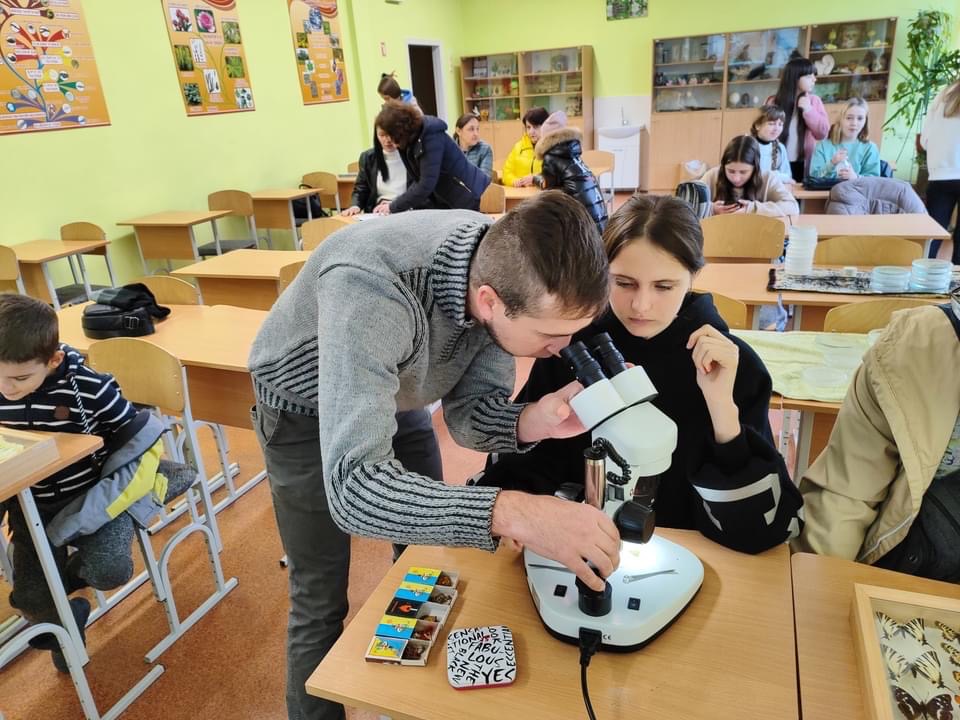
Pupils of the Krasnokutsk Lyceum, together with the researcher of the Slobozhanskyi Nuclear Power Plant, Vitalii Vyunnyk, study insects with the help of a microscope.
Why is it necessary during the war?
Experts say that children's understanding of the importance of the diversity of plants, animals, and their environment will form in them a respect for nature and the desire to protect it.
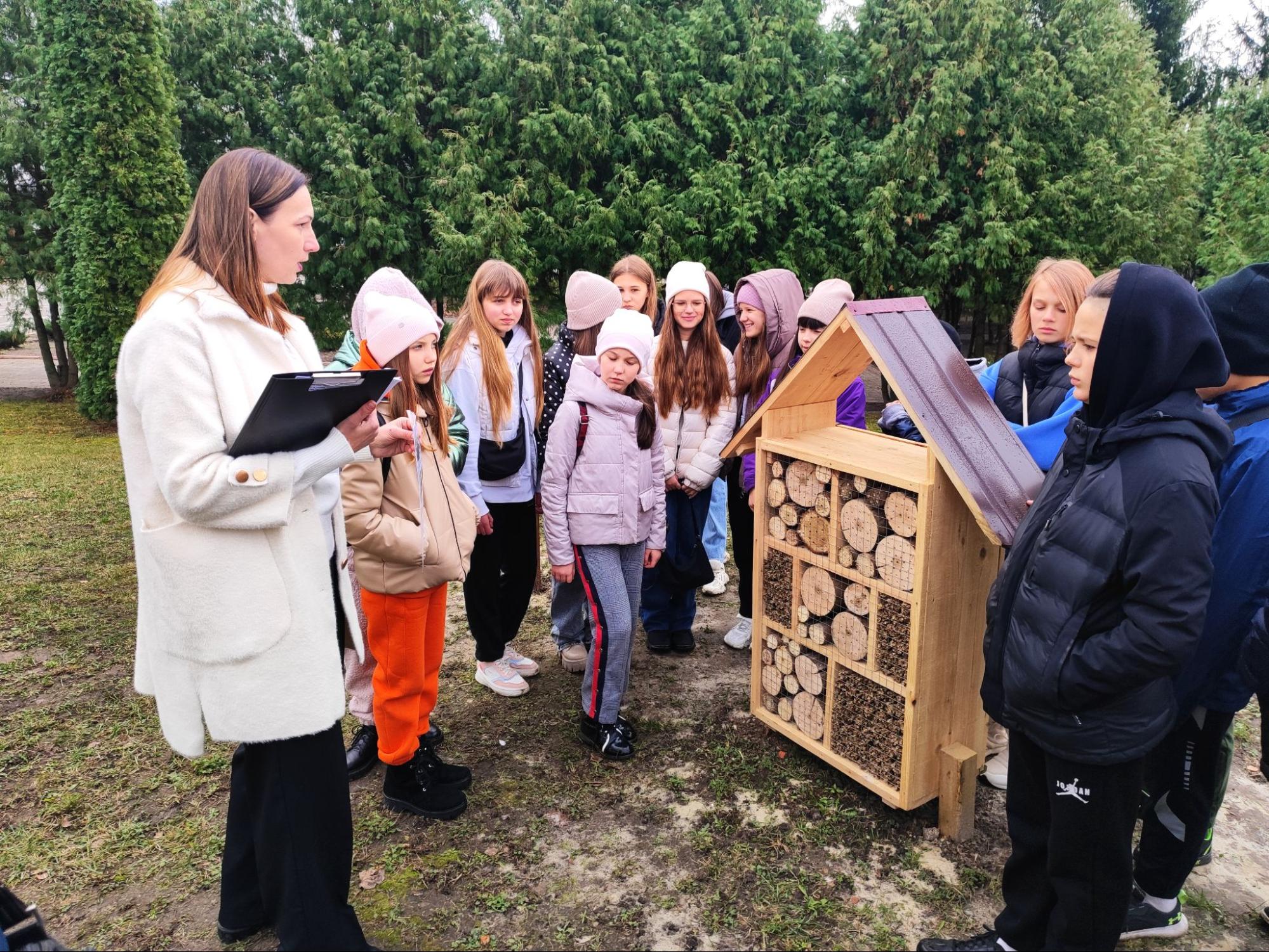
Excursion through the biodiversity space from Anna Shumilova, educational expert of the project from the Slobozhanskyi NPP.
"In today's conditions, when educational processes are disrupted due to war, this line of work is essential," says Koichurenko.
Visiting such locations, people will see the diversity of the local nature and the latest solutions in the arrangement of urban spaces. A fundamental process of the project is social action aimed at advancing the public good.
The head of the NGO says that the organization is currently working on several projects to create youth and environmental education spaces, local culture, and education. He notes that people will always question the reasons, especially in the conditions of a small community. However, he did not encounter this in relation to the Biodiversity Space project. People understand the importance of allowing young people to learn, develop, and find themselves in these difficult conditions.

A lesson about insects for schoolchildren with the participation of scientists.
The eco-activist adds that the creation of biodiversity space already contributes to many vital processes and there are many ideas for further development. For example, in cooperation with the Slobozhanskyi National Nature Park, a new Ecological Research Center has started working in the community where residents,scientists, and volunteers all work together on environmental education activities.
In addition, in the communication process between scientists, educators, and young people, the idea arose to continue the active development of natural science studies in the lyceum and to create a biological research school on this basis.
Even more useful solutions!
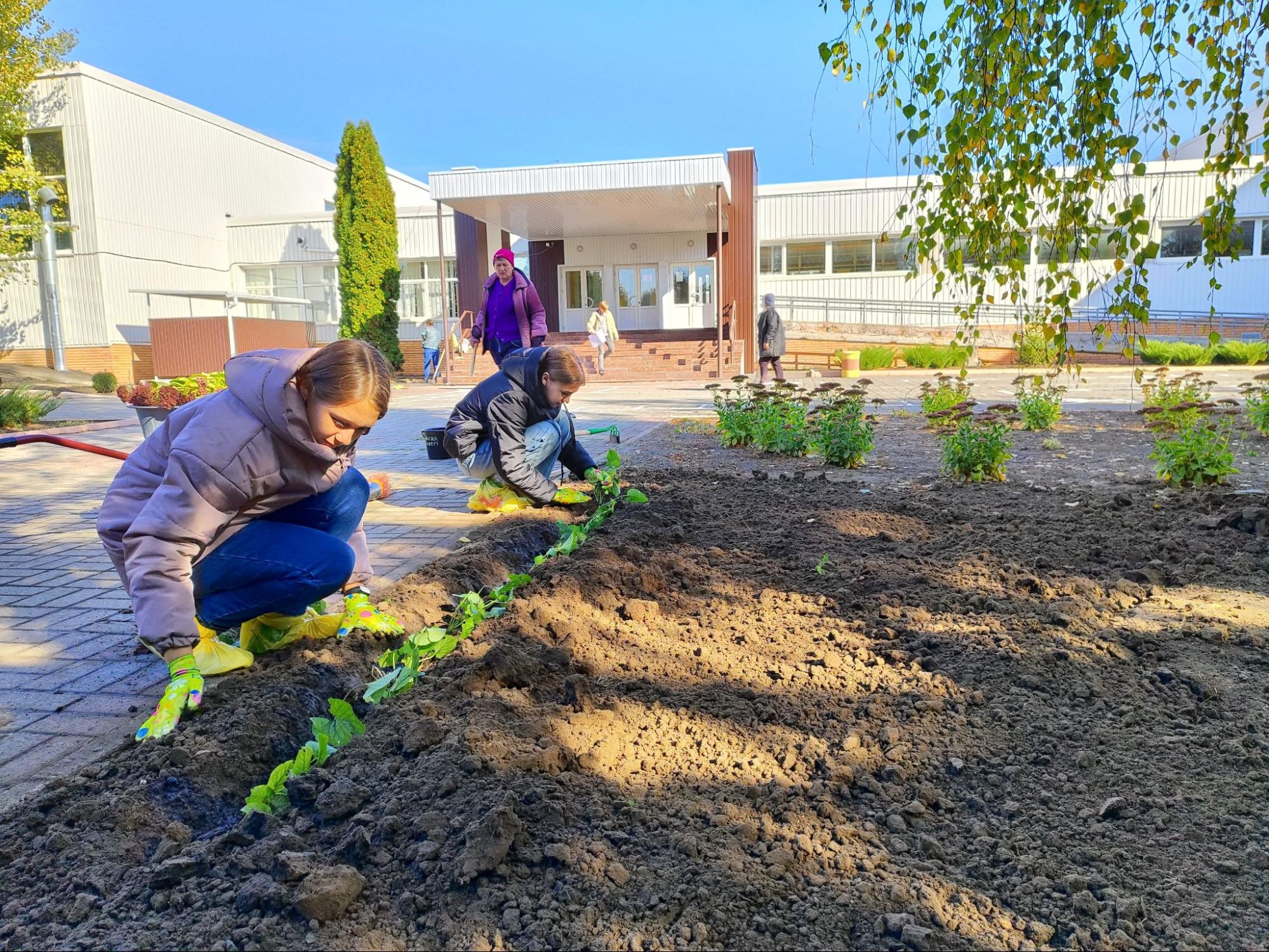
Lyceum students planted a lawn with different herbs.
The Green Art Tour team is happy that the space of biodiversity has become a driving force for the active and constant interaction of students, teachers, and administration with professional scientists, conservationists, and specialists in natural sciences.
"There are many ways to implement ecological, educational and nature-oriented solutions. You can change park zones, create natural locations in the city space, ecological paths, and green zones, preserve forest strips, etc.,"
Residents of Krasnokutsk are ready to share their own experiences and developments with other communities, and make some suggestions:
- Find a partner among nature protection and environmental organizations to help plan. Communicate with interested parties, and create a complete project plan. In Ukraine, there are environmental organizations that have experience and knowledge about the methods of implementing such projects in communities. There are communities where this is already done.
- Educational institutions of a village, town, or city can create initiative groups and work purposefully to find information, partners, experts, and resource support.
- You can and should actively involve and offer your own initiatives to local organizations. Propose solutions to local authorities and communicate with residents. Demonstrate to them the effectiveness of the idea, potential results, and changes.
- Finding and involving people on the ground is crucial — educators, artisans, public activists, environmentalists, and everyone who wants to cooperate as volunteers or team members. Invite youth, teachers, local government representatives, and activists to work together.
Newsletter
Digest of the most interesting news: just about the main thing






